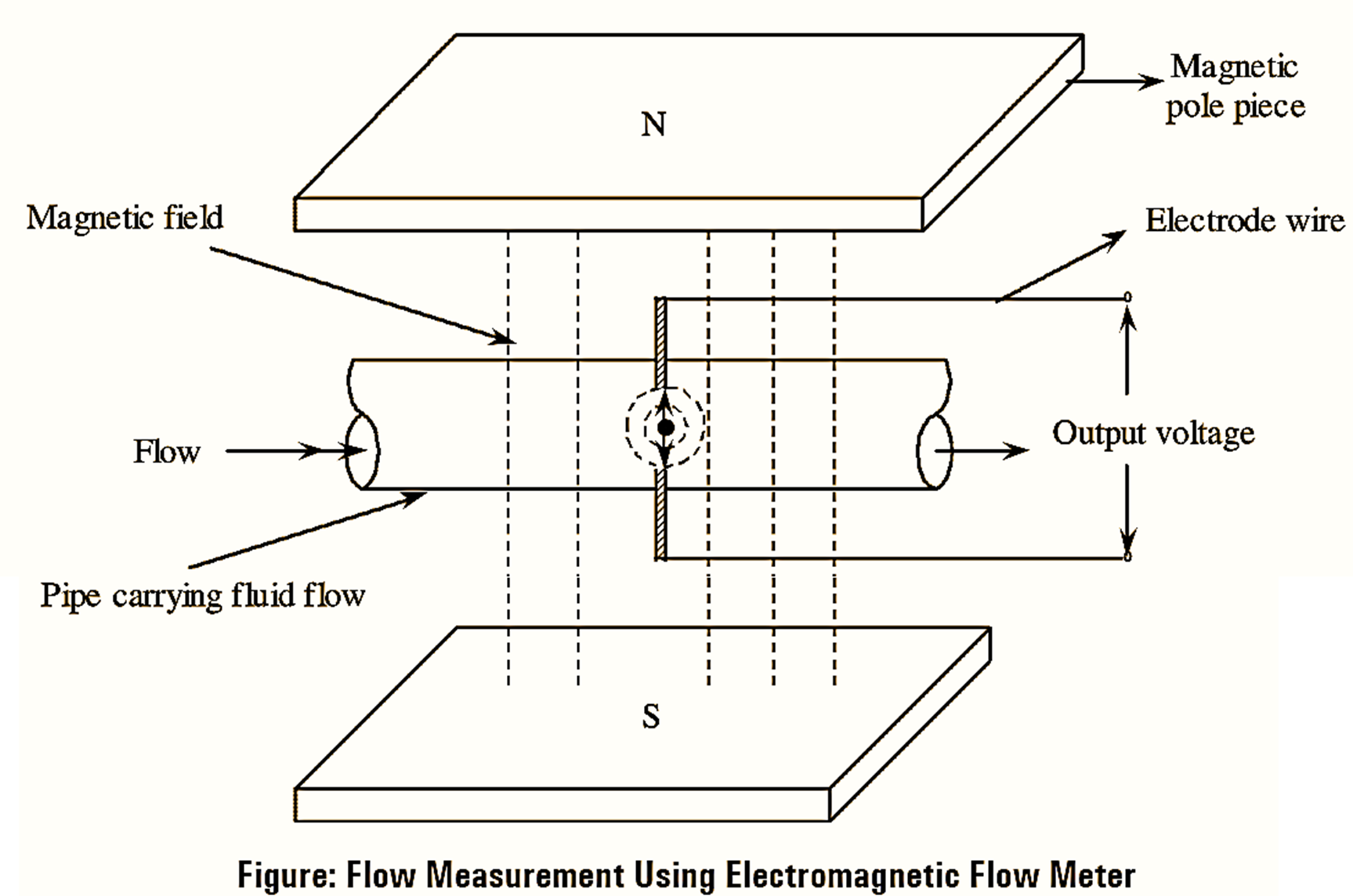
Working Principle of Electromagnetic Flow Meter
The measurement of flow rate using an electromagnetic flow meter depends on Faraday’s law of electromagnetic induction. When a pipe or tube carrying electrically conducting fluid is placed in a transverse magnetic field an e.m.f. will be induced across the electrodes connected to it. This voltage gives the measure of the velocity of the fluid or flow rate of the fluid.
Construction of Electromagnetic Flow Meter
An electromagnetic flow meter consists of a nonmagnetic and non-conducting pipe to carry the flow whose velocity or flow rate is to be determined (see Figure). To the opposite sides of this pipe a pair of insulated electrodes which are in contact with the fluid flow inside the pipe are connected. Now this pipe is placed between the two poles of an electromagnet or permanent magnet that produces magnetic field.
Working of Electromagnetic Flow Meter
When the conducting fluid whose flow rate is to be measured is made to flow through the pipe, it cuts the magnetic field causing some e.m.f. to be induced across the electrodes. This induced voltage is given by,
\[e=Blv\]
Where,
B — Flux density
l — Conductor length (this is equal to diameter of the pipe)
v — Velocity of the fluid (conductor)
From the above equation it is clear that the voltage induced across the electrodes is directly proportional to the diameter of pipe, average velocity of fluid and hence gives the volume flow rate of the fluid.
Advantages of Electromagnetic Flow Meter
- This method does not cause any obstruction to the flow of fluid, hence pressure will not drop.
- It can be used with pipes of any size.
- Accuracy is good.
- The relation between output voltage and flow rate is linear.
- Effectively measures the flow rates of slurries, conducting fluids, sludge etc.
- The output is independent of variations in temperature, viscosity, density and so on.
Disadvantages of Electromagnetic Flow Meter
- Highly expensive.
- The presence of gas and air bubbles in the fluid leads to errors.
- The fluid under measurement must be conductive in nature.
Limitations of Electromagnetic Flow Meter
- Its use is limited to conductive fluids only.
- Its flow range is limited to 10-3 g pm to 104 g pm i.e., 0.5 to 4.95 × 102 m3/hr.